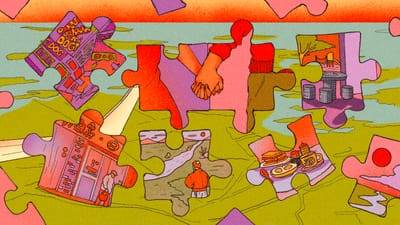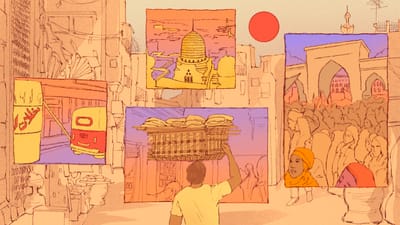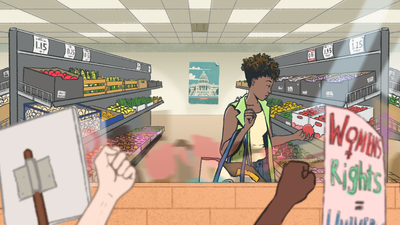Time is like water,
and water is as cold and deep
as consciousness.
And time is like a reflection
made partly by water,
partly by me.
Time and water
rush trackless to vanish
inside my consciousness.
- Stein Steinarr, Icelandic poet
A letter to the future
Ok is the first Icelandic glacier to lose its status as glacier. In the next 200 years, all our main glaciers are expected to follow the same path. This monument is to acknowledge that we know what is happening and what needs to be done. Only you know if we did it.
August 2019, 415 ppm CO2
- Andri Snaer Magnason’s obituary for the Ok-glacier
The story goes like this. Naddodd or Garðar Svavarsson or Flóki Vilgerðarson find Iceland in their respective century and are struck by its profound beauty, a stark barrenness that extends as far as the eye can see.
Naddodd explores the land, ascending a mountain to search for any sign of fire. But no smoke comes. He returns to his boat. As he boards, a sheet of snow descends. He decides the island shall be known as the Land of Snow. Snæland.
Garðar Svavarsson travels all the way along the island’s coast, being the first person to confirm that it is indeed an island. He goes ashore and stays for the winter. He bequeaths the island with his name. Garðarshólmi.
Flóki Vilgerðarson sets sail, with his family in tow. Flóki’s daughter drowns during the journey. The surviving members of the family follow the third of Flóki’s three ravens, the one that did not return, and find themselves ashore. Flóki hikes upwards, not looking for smoke, but looking for shelter for the coming winter. Instead, he sees the polar ice of the West Fjords. He decides this is the Land of Ice. Ísland.
If any of the three travellers had kept their eyes on the horizon longer, they would have noticed the massive ranges afar and called it the Land of Mountains. Or if their timing was right and a volcano erupted, the Land of Magma. Or if they mistook the craggy outcrops of rock on the mountains for creatures, the Land of Trolls. But as far as we know, they had not seen any of these things. They saw the snow, they saw themselves, they saw the ice, and their vision was limited by where their eyes could reach. The name that stuck was the one that all could understand, that all had seen. The Land of Ice. Iceland.
The story goes like this. A Palembang prince sails towards an island he spots from a hill across the seas. His ship, a prahu or jong, we are not certain which, is buffeted by unexpectedly rough waters, the vessel threatening to go under. The crew toss everything large, but still, water seeps into the deck. The captain asks the prince to throw his crown overboard. The crown splashes, sinks, the clouds clear. They land ashore. The prince looks at the edge of the forest and through its dense foliage, he spots a majestic mane, a blossoming tan, framing the fierce features of the creature’s face. He asks his advisor for the creature’s name. सिंह. Sanskrit for “lion”. Siṃhá. The prince’s mind swells at this previously unseen sight. He wants to name the island after what he did not know. A testament to his nescience. Singha Pura. The Lion City.
My family went to Iceland to experience sights unlike any we had ever seen. Geologically, we are nothing alike. While Singapore is insulated on all sides from tectonic plate activity, Iceland sits directly on the intersection of two tectonic plates. And Singapore’s highest point is Bukit Timah Hill, a paltry 164 metres high, compared to the multiple peaks in Iceland that are over 2,000 metres tall. Yet, there are surprising cultural overlaps despite these earthly differences.
It too is an island that realised it would need to be friendly with all to survive. It would have to train its people, since there was little to no arable land to cultivate. It was a colony, supervised from afar. But while we pilfer our urine and waste to create new water, Iceland uses its geothermal water to generate energy, jagged pipes crawling up mountains and mossy plains spreading energy across the land. Less than 400,000 people live in Iceland, compared to over 5.9m in Singapore; below 10 percent of our population, in other words, living on more than 100 times as much land. While the available land is plenty, the romantic pickings are slim. Singaporeans test their mettle on Tinder, Bumble, Hinge, Coffee Meets Bagel, Grindr, Christian Mingle, or Paktor. Icelanders have their own app: Islendiga-App. The apps in Singapore are used to connect with a stranger; Islendiga-App is designed to prevent you from dating your cousin.





